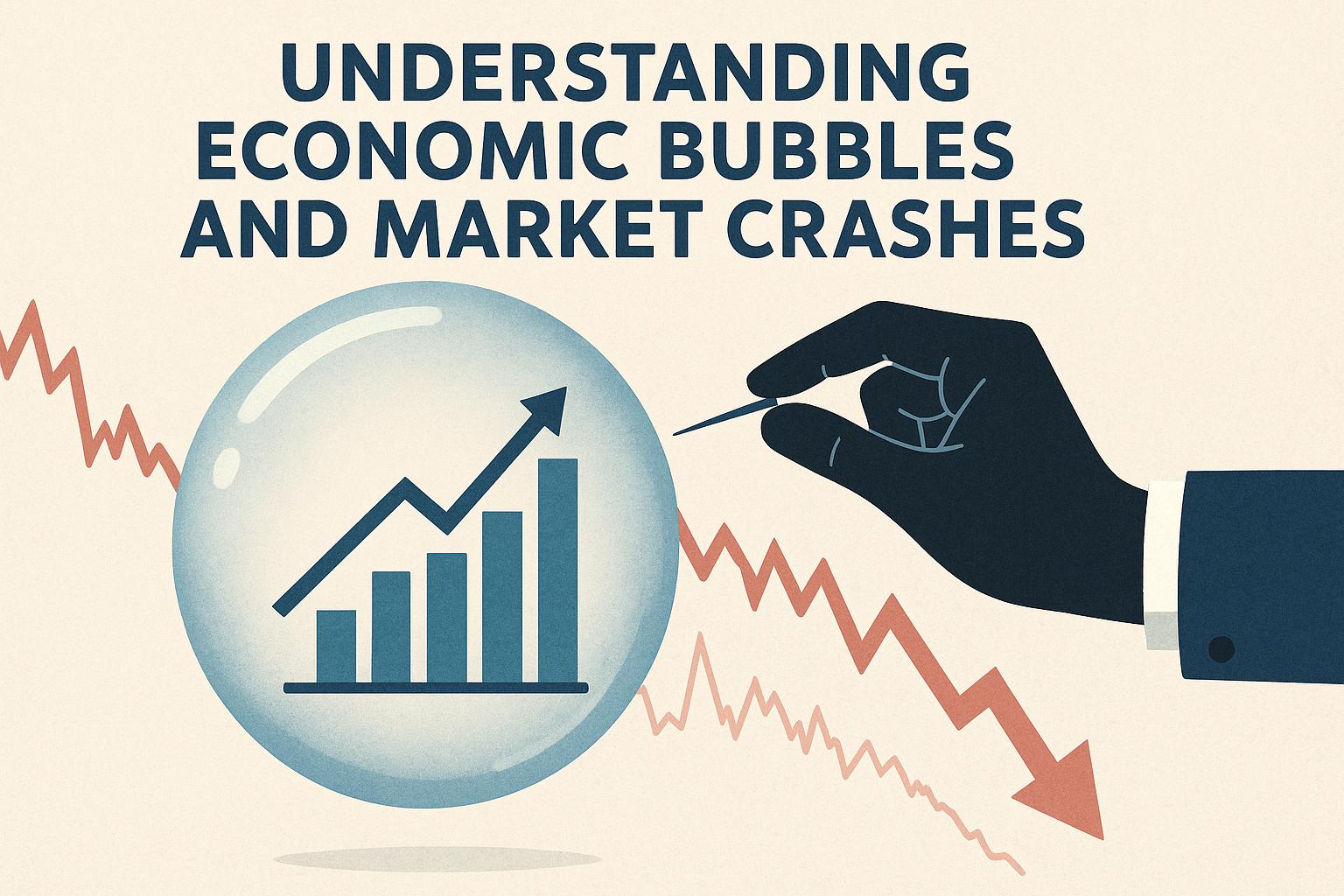Understanding Economic Bubbles and Market Crashes
- Written by: admin
- Category: Uncategorized
- Published: October 17, 2025

Understanding Economic Bubbles
Economic bubbles are a fascinating phenomenon in financial markets, marked by the rapid escalation of asset values beyond their fundamental worth. These occurrences are often fueled by rising speculative demand. Typically, a bubble begins when investors believe that the recent upward trend in asset prices will continue indefinitely, encouraging further investment and driving prices even higher.
Historical Context
The phenomenon of economic bubbles is not a modern invention; rather, it dates back several centuries and spans various asset classes. From real estate to commodities and even stocks, bubbles have repeatedly formed and burst in different economic environments.
One of the earliest and most famous examples is the Dutch Tulip Mania of the 17th century. During this period, tulip bulbs became highly coveted, leading to skyrocketing prices that eventually collapsed. Speculators paid exorbitant sums for tulip bulbs, convinced that prices would keep climbing. When reality set in, the value of tulips plummeted, leaving many investors with significant losses.
In more recent history, the Dot-com Bubble of the late 1990s serves as a notable case study. Driven by speculative investment in technology and internet-based companies, asset prices soared far beyond their practical value. As the market adjusted and companies failed to deliver on their promises, the bubble burst, resulting in massive losses.
Phases of a Bubble
Economic bubbles typically progress through several recognizable phases:
Stealth Phase
During the stealth phase, a small group of discerning investors recognizes the potential in a particular asset. They begin accumulating shares or commodities, convinced of their long-term profitability and growth potential.
Awareness Phase
As price increases become noticeable, broader awareness builds. More investors are drawn to the asset, further raising demand and pushing prices even higher. The awareness phase often sees early adopters gaining substantial returns on their initial investments.
Mania Phase
The mania phase is characterized by widespread public interest, often fueled by media coverage. The general public, tempted by tales of easy profits, enters the market en masse. This leads to a frenzied buying spree, driving prices to exorbitant levels that are unsustainable.
Blow-off Phase
In the blow-off phase, the bubble reaches its peak. Prices become untenable, and demand begins to wane. As reality reasserts itself and speculative fervor subsides, prices plummet. The crash that follows can wipe out significant wealth and lead to broader economic repercussions.
Market Crashes
Market crashes are sudden, severe declines in the stock market’s value. These events can occur when bubbles burst, though they may also arise from other catalysts. Factors such as economic shocks, political instability, or shifts in investor sentiment can trigger sudden declines.
Key Characteristics
Market crashes share several defining characteristics, the most prominent being rapid sell-offs. As panic spreads through investor communities, seemingly small changes in market conditions can lead to massive sell pressures. Investors, eager to prevent further losses, rush to offload their assets, exacerbating the market’s downturn.
This panic can lead to significant economic consequences, rippling through businesses and impacting employment, production, and global markets. Crashes tend to highlight vulnerabilities in economic structures, leading to calls for reevaluation and reform in financial systems.
Examples of Market Crashes
Two significant market crashes illustrate the severe impact these events can have:
The Great Depression (1929)
The 1929 stock market crash marked the beginning of the Great Depression, a decade-long global economic downturn that was aggravated by excessive speculation and an over-reliance on volatile stocks. The subsequent economic hardship underscored the need for diversified investments and regulatory safeguards.
The Financial Crisis (2008)
Originating from the collapse of the United States housing market, the 2008 financial crisis was precipitated by high-risk mortgage lending and the failure of major financial institutions. As liquidity dried up and panic spread, global economies suffered, underscoring the interconnectedness of modern financial systems.
Prevention and Management
Complete avoidance of economic bubbles and market crashes is challenging, yet their impact can be softened through strategic management and preventative measures. Regulatory oversight must be strengthened to detect and mitigate speculative excesses. Implementing prudent financial practices, such as maintaining diverse investment portfolios and adequate liquidity, is crucial.
Stress testing financial institutions can reveal vulnerabilities, allowing for corrective action before a crisis escalates. Furthermore, informed decision-making by investors, backed by thorough analysis and skepticism of unsustainable trends, can provide a degree of protection against bubble formations and market crashes.
Financial literacy, awareness, and proactive risk management are vital in minimizing the adverse effects of economic cycles. By promoting these principles, economies can enhance their resilience against future financial upheavals.
Understanding economic phenomena like bubbles and market crashes requires a comprehensive approach, integrating historical lessons with modern financial tools. For those interested in a deeper exploration of economic theories and market dynamics, resources in finance and economics offer invaluable insights.
This article was last updated on: October 17, 2025

